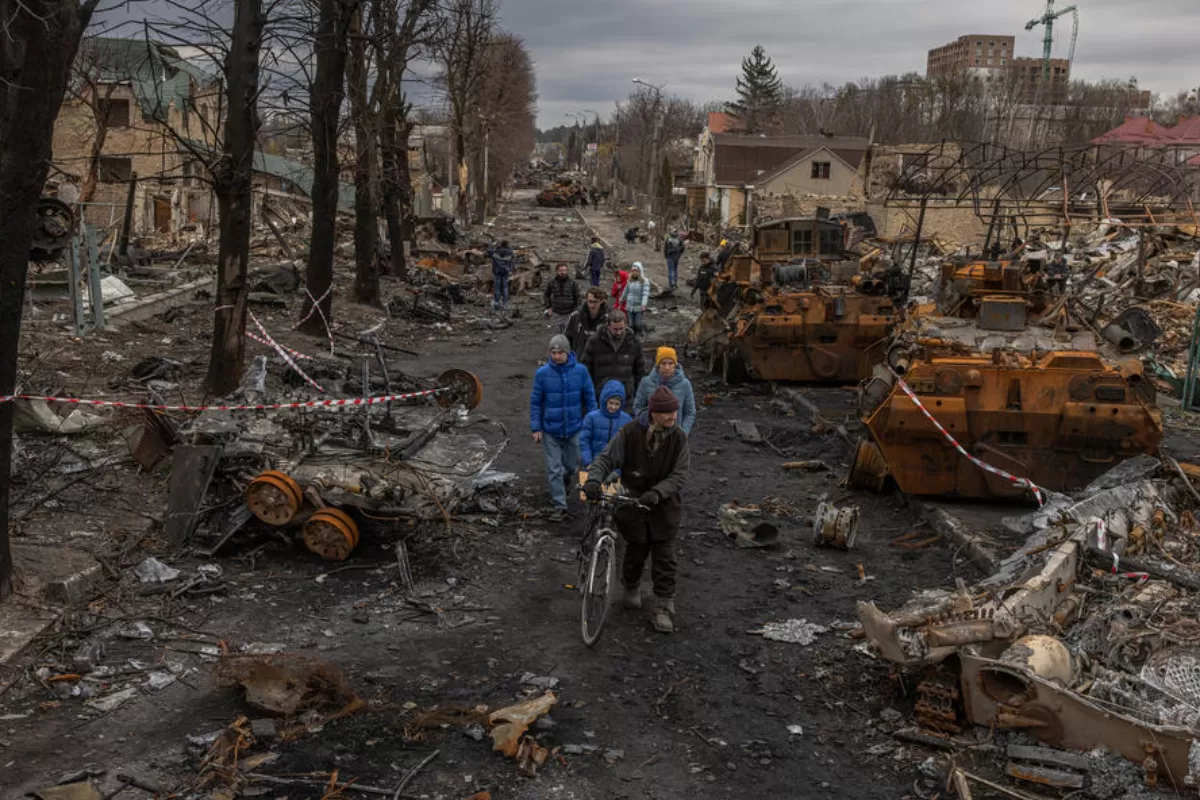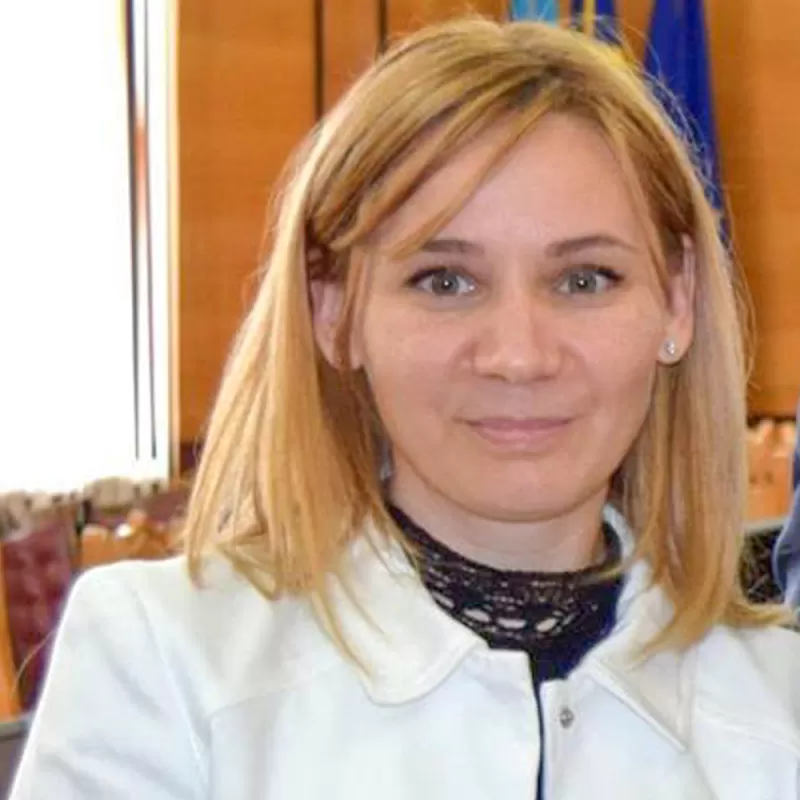
The war in Ukraine is part of Russia’s efforts to maintain its neighbor within its sphere of influence. Moscow is justifying its imperial aspirations by referencing a common identity, but also a past that Russians and Ukrainians shared as part of one and the same state – at first the Russian Empire, then the Soviet Union. Russian propaganda is promoting Soviet legacy because the people of the former USSR can easily identify with it. Many have lived to see it, were exposed to its ideology and myths and were even indoctrinated. The invasion of Ukraine has however shattered many Soviet concepts and myths. Some were even taken over by the Ukrainians and turned against the occupation forces. Others, such as the myth of the Russian army, the myth of the Russian soldier or the myth of the brotherhood of people, which Kremlin and its supporters in ex-Soviet states have fueled in the three decades since the collapse of the USSR, are blatantly disproved by the reality on the ground, to the extent they lose their convincing power.
The myth of the victorious Russian army
Russia is considered the world’s second most powerful military force, due to its nuclear arsenal as well as its number of active troops – close to a million – its military technology and tradition. Russia is the successor of the USSR, once a greatly militarized state with an economy primarily focusing on the military industry. One of the myths underlying the Soviet Union was the victory of the Great Patriotic War (World War II), recalibrated and recuperated by Putin’s Russia. The significant loss of human lives (which according of some estimates exceeded 20 million), both military and civilian, was represented as the ultimate sacrifice in the fight against Nazi Germany, instead of the result of a faulty organization and tactics of Soviet authorities and their disregard for the lives of their own soldiers, whom they used as cannon fodder and often forced to assault the enemy’s position in large waves.
The failure of Putin’s “special military operation” in Ukraine and the resistance of Ukrainian forces have dealt a heavy blow to the image of one of the most fearsome armies in the world, proving it can be challenged by a smaller, yet better-organized force. The Russian army has so far failed to seize control of any major city. The Ukrainian army has repelled a number of Russian attacks, and after a month of fighting, Russian troops were forced to retreat from the Kyiv area in northern Ukraine. From the very first days of the war, it was easy to notice the lack of training of certain soldiers and Russia’s inability to provide logistic support to its invasion. The Ukrainian army captured very young soldiers, who didn’t know where they were and why they were sent to Ukraine. They hadn’t been given a clear mission, they were starving and cold. Images from the war zones show numerous units of Russian military equipment destroyed or abandoned, while in some cases the vehicles had run out of fuel. According to data made available by Kyiv authorities on April 6, Russia’s losses since the beginning of the war would stand at 18,600 dead, 684 tanks, 1,861 armored vehicles and 1,324 means of transportation destroyed. Additionally, 150 aircraft and 135 gunships were shot down. The figures have not been confirmed by independent sources, and Russia – which very rarely provides any updates – claims it lost much fewer men. On the other hand, at the end of March, NATO estimated that Russia’s losses might stand somewhere between 7 and 15 thousand dead. The Kremlin’s spokesman, Dimtry Peskov, admitted Russia has sustained “significant human casualties”. These also include a large number of generals and commanding officers.
The myth of the Russian liberator
Images of the atrocities committed in Bucha that transpired in the media after the withdrawal of the Russian forces, snapshots of orphaned children standing by the graves of their mothers buried in playgrounds, the massive destruction caused by artillery fire in cities such as Kharkiv and Mariupol, all the tortured civilians and raped women have destroyed yet another myth regarding the Russian army, fueled by Kremlin propaganda – the myth of the Russian liberator. The crimes of Russian soldiers in Ukraine speak of a new reality to a population that was brought up watching Soviet films about the heroic deeds of Russian liberating forces.
The Red Army committed countless crimes during World War II, particularly after reaching territories they considered to be the enemy’s. Here, its military terrorized the population, looting and raping. It was forbidden to speak of these actions in the Soviet period. The real activities of Russian soldiers between the Prut and the Dnieper rivers, for instance, as well as their role in creating the Bolshevik occupation regime were opened up for discussion only after 1990. Until then, the issue of the Soviet troops in the Moldovan Soviet Socialist Republic had been tackled only in terms of their liberating purpose. Soviet soldiers were always represented in ideal situations. Most villages had monuments erected to honor these soldiers. In fact, particularly during the first years after the war, Soviet fighters got involved in every repressive action of the regime targeting the population of Moldova – the deportations of 1941, 1949, 1951, the forced famine of 1946-1947, when the Bolshevik regime, with the help of the army, seized the peasants’ entire food supplies. In Afghanistan, the Soviet army waged a brutal war, committing massacres, tortures, rapes and deliberately killing civilians. Human rights organizations have condemned all of these crimes, going as far as describing them as genocide. The Russian army emulated the actions of its Soviet predecessor: the campaign in Chechenia was a brutal one – the capital Grozny was razed to the ground, and during the war in Syria the Russian aviation bombed numerous civilian objectives, including hospitals.
Despite all of these crimes, the image of the Red Army – and by extension that of the Russian army – remained largely positive in ex-Soviet space, reinforced by a powerful government propaganda. The Kremlin has zero tolerance for any criticism addressing the Russian or Soviet armies. The “heroic” image of the Red Army is protected by Putin’s regime, which in 2014 amended the criminal law, punishing any spread of “fake” information about the actions of the USSR during WWII.
At present, according to official propaganda, the Russian army is fighting to liberate Donbas from Ukrainian nationalists and is defending Ukraine from genocide, just as the Soviet army liberated the Eastern European countries in WWII. With the launch of the Russian invasion of Ukraine, the Russian State Duma introduced a 15-year prison penalty for anyone disseminating news about the actions of the Russian army in Ukraine, which the Kremlin might consider “false” or “discrediting the armed forces of the Russian Federation”. For this reason, independent media outlets were forced to suspend their activity on Russian territory. Several activists and protesters were arrested for carrying anti-war banners.
The myth of the brotherhood of people
Another myth of Soviet propaganda, that of the brotherhood of Soviet people, fostered the idea of a unity between the fifteen former “sister republics”. A much closer bond united the Slavic people of Russia, Belarus and Ukraine, who shared the same language, culture and literature. Ever since the summer of 2021, Vladimir Putin wrote about “the historical unity of Russians and Ukrainians”. Distorting historical events and present half-truths, Putin tried to prove Ukrainians and Russians are one and the same people. Putin continued to advocate the image of the Great Russian people, a nation made up of Great Russians, Little Russians and White Russians. On a number of occasions, Putin said Ukraine is an artificial state created by Lenin, or the result of the Belovezh Accords that formally acknowledged the collapse of the USSR. By invading Ukraine in what the Kremlin describes as “a special military operation” designed to “demilitarize and denazify” this country, Putin in fact seeks to destroy the Ukrainian people. His methods could be seen by the whole world in those areas temporarily controlled by the Russians. The Russian invasion of March, the bombing of Ukrainian cities, the massacring of civilians, the occupation of Eastern Ukrainian territories in 2014, the annexation of Crimea, all of these actions have however created a deep rupture in the relation between the two Slavic peoples that share a common past in the Kyivan Rus’, one that will take a very long time to restore. By repeatedly attacking Ukraine, Putin got the reverse of what he was hoping to achieve: a consolidated Ukrainian identity and the hostility of the Ukrainian people.


